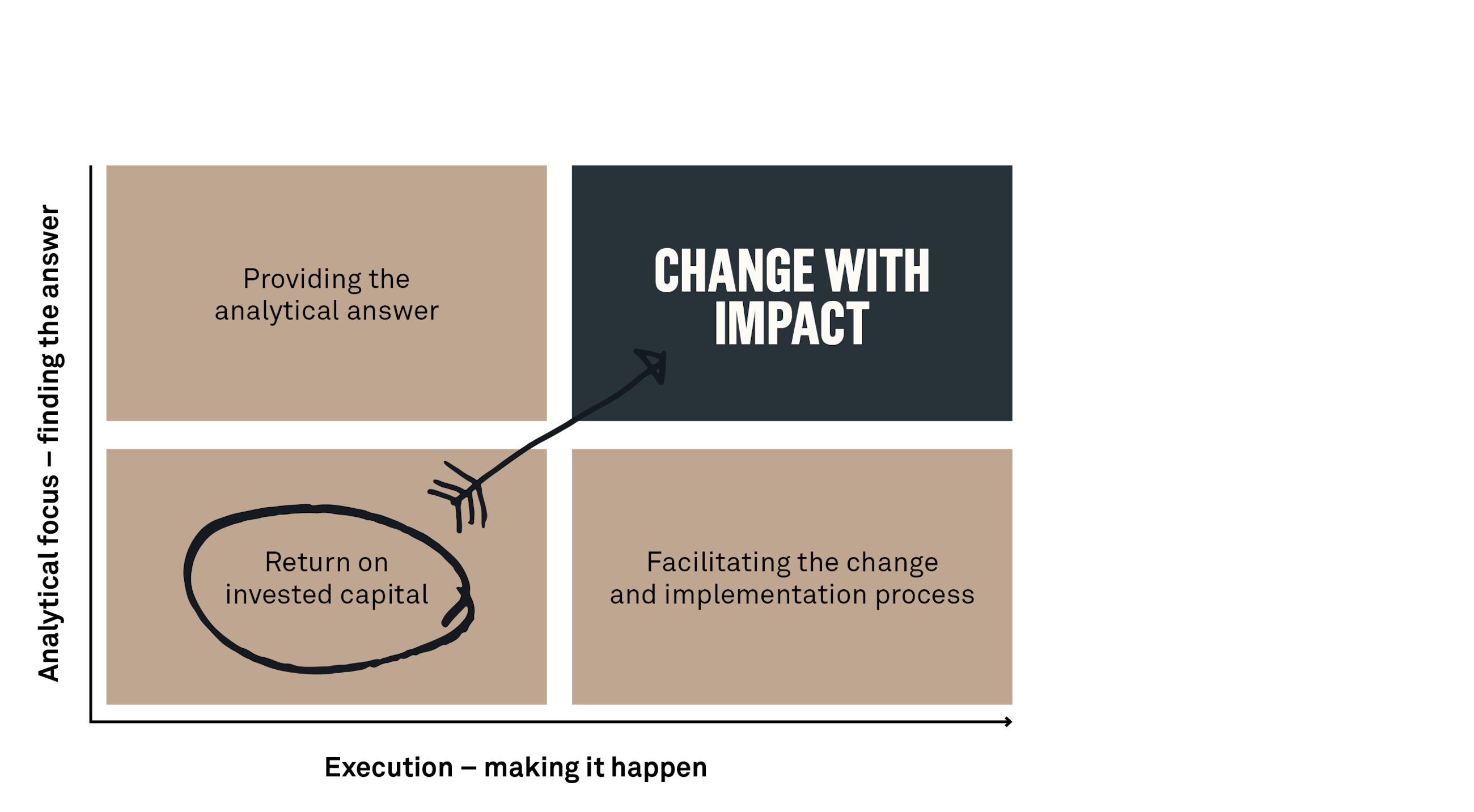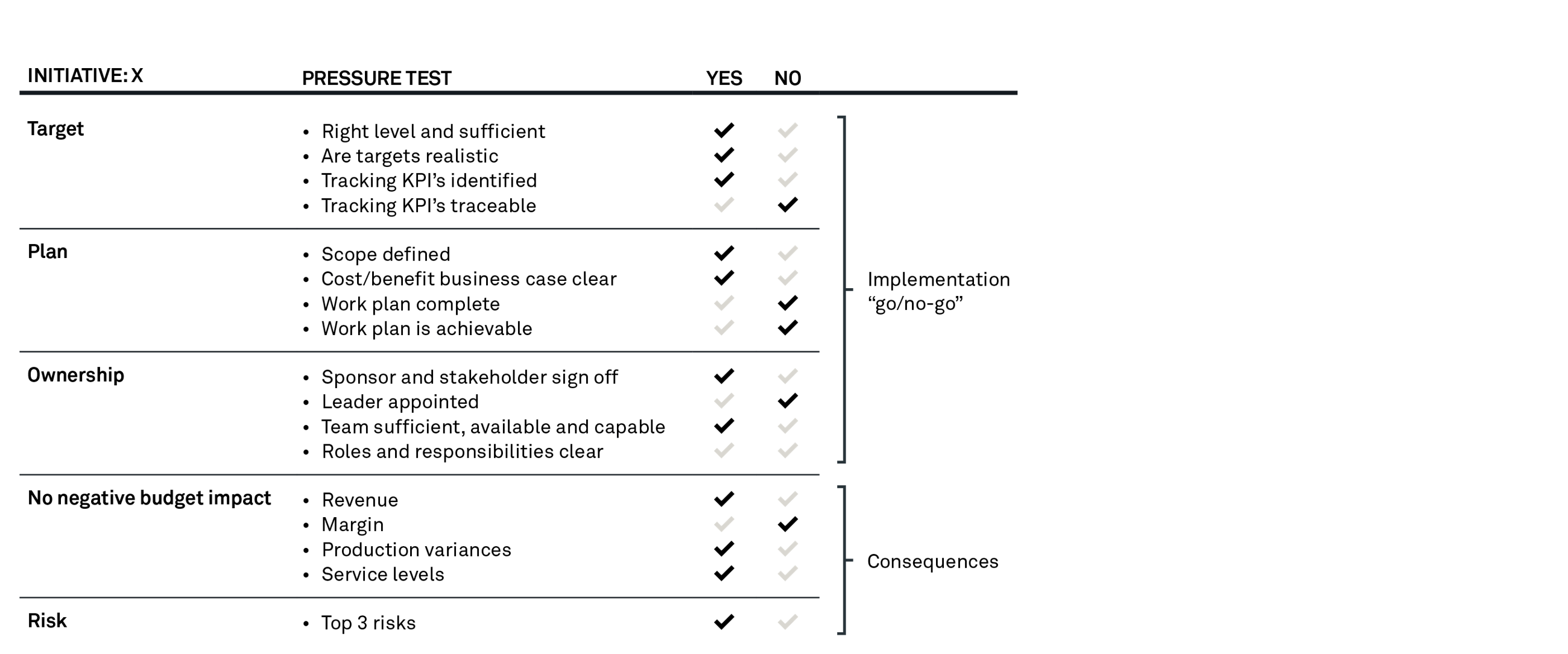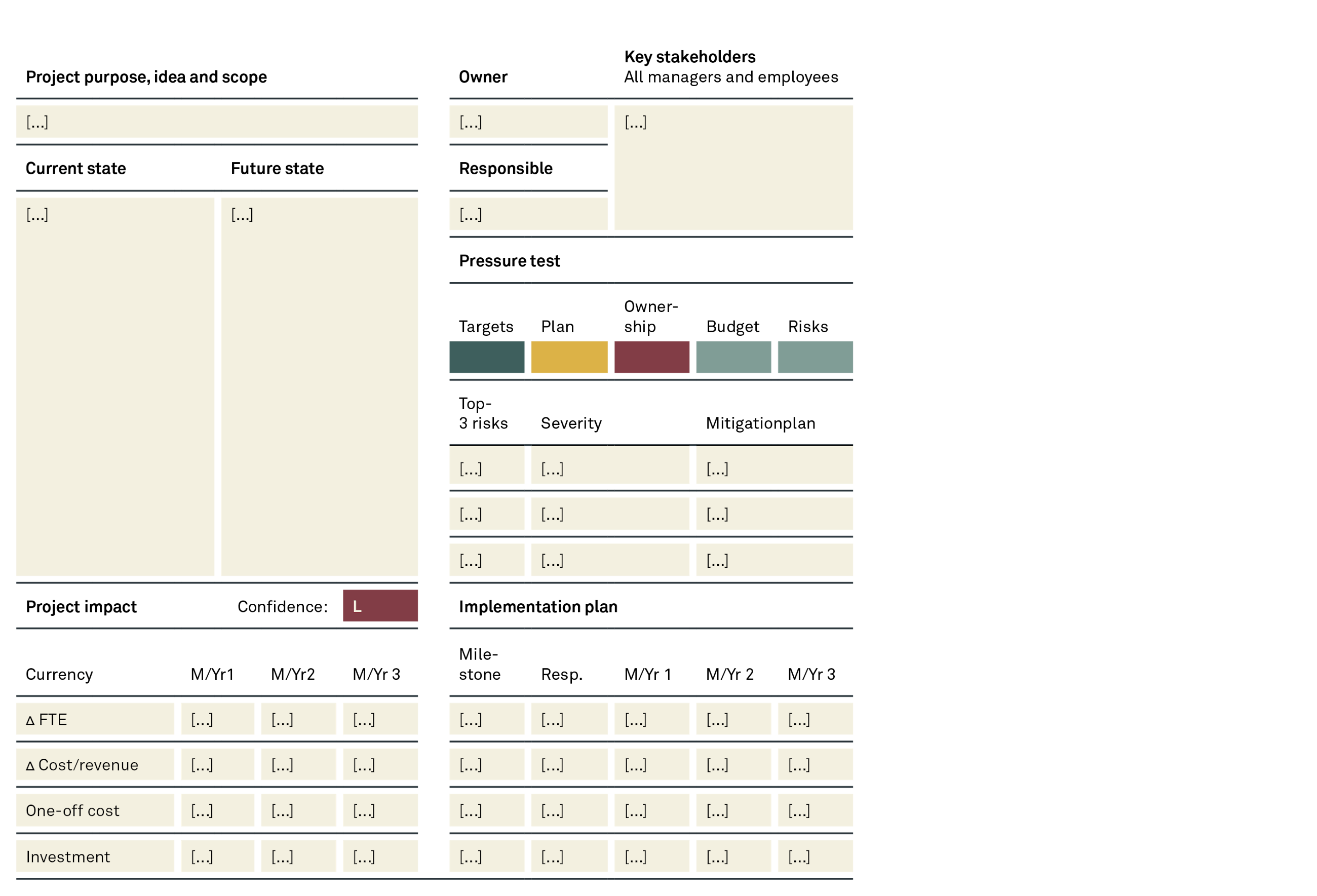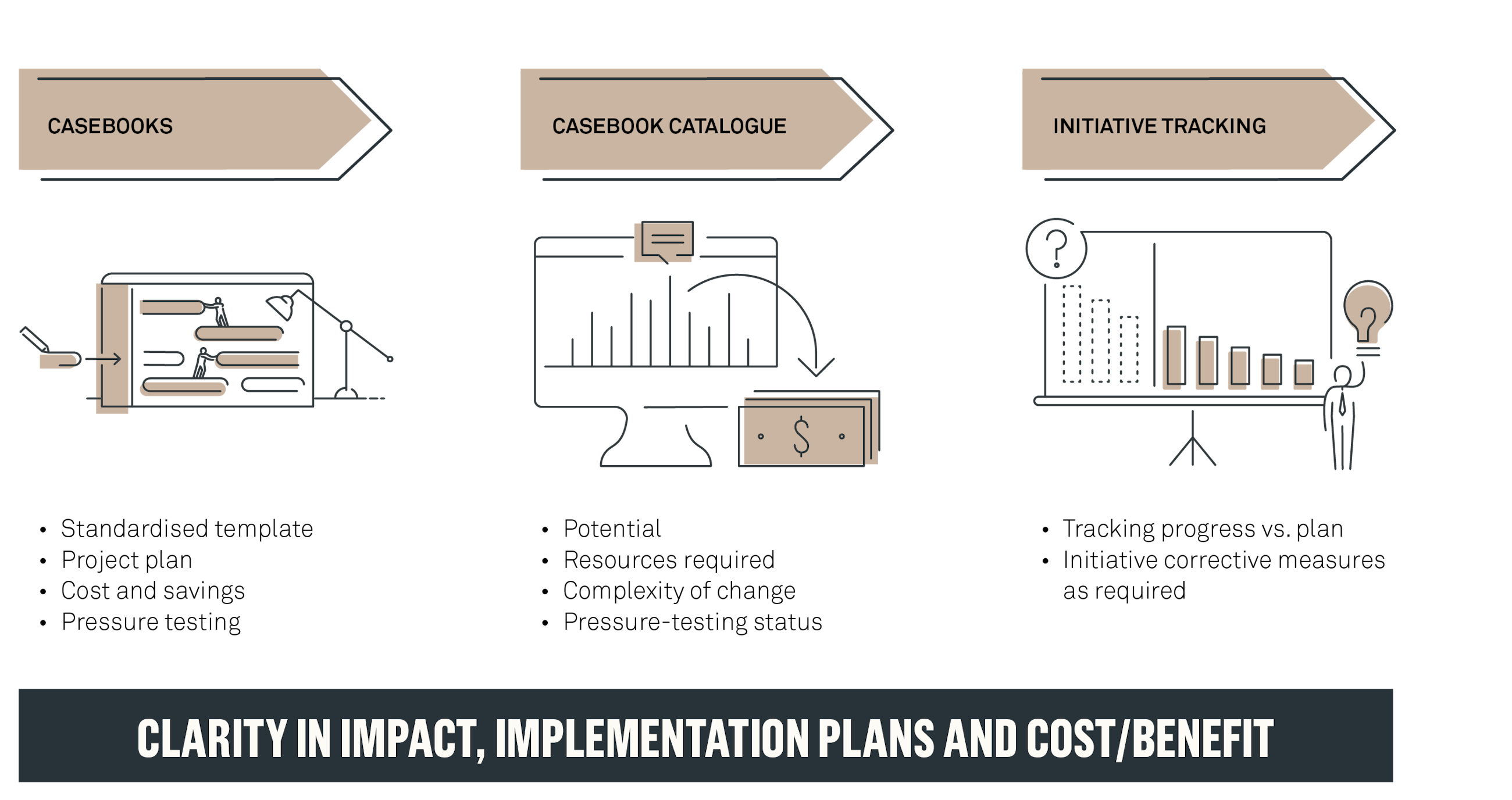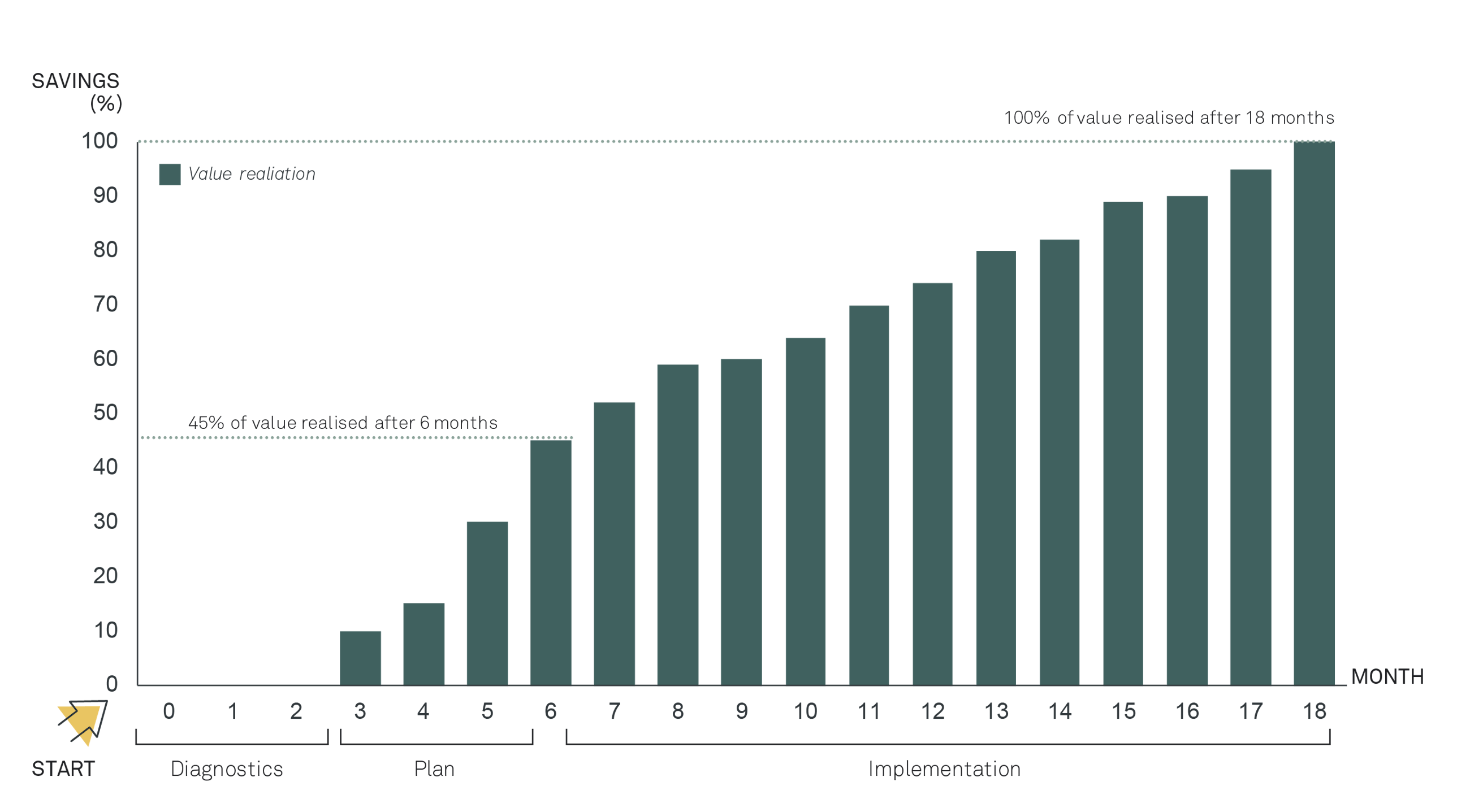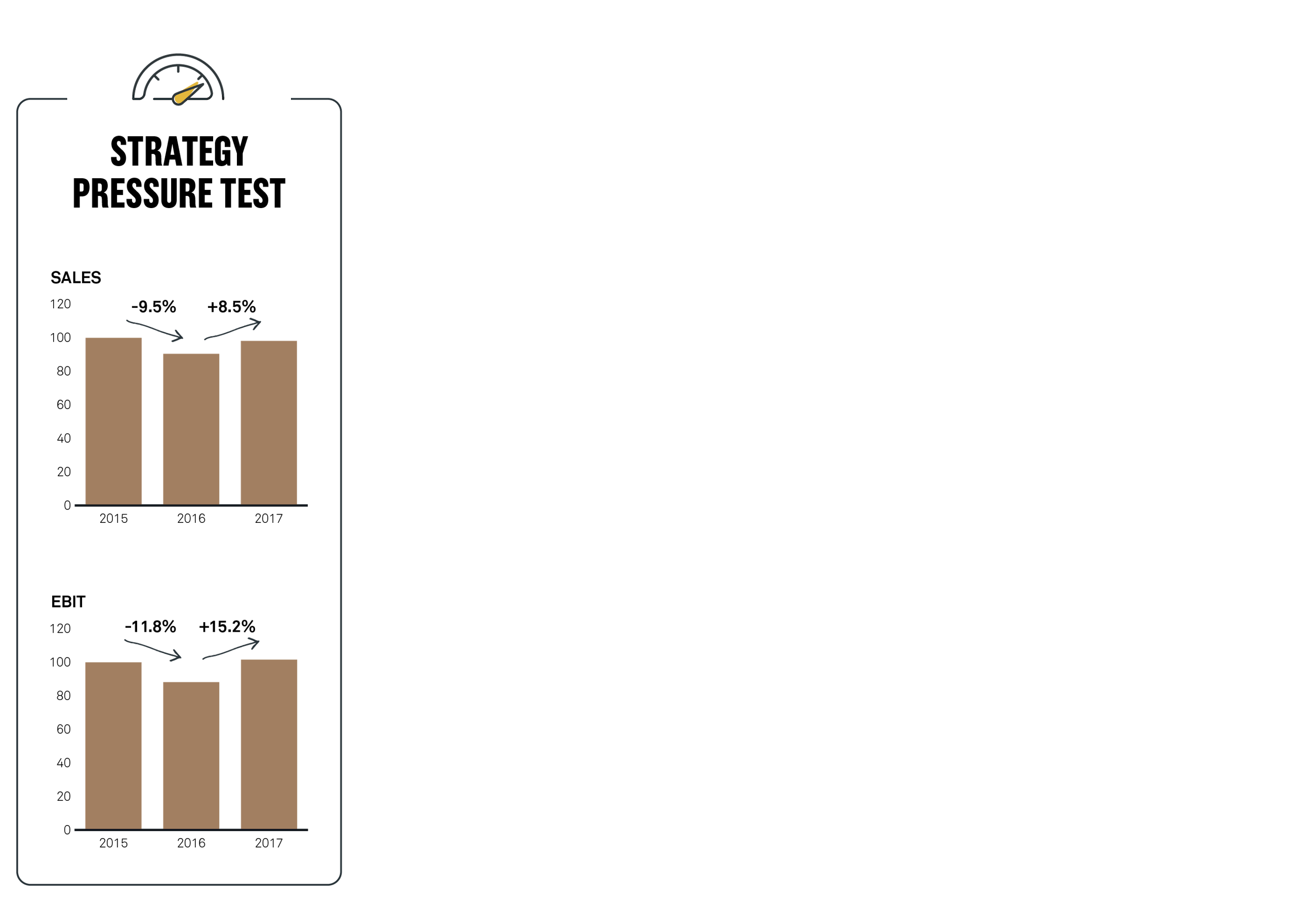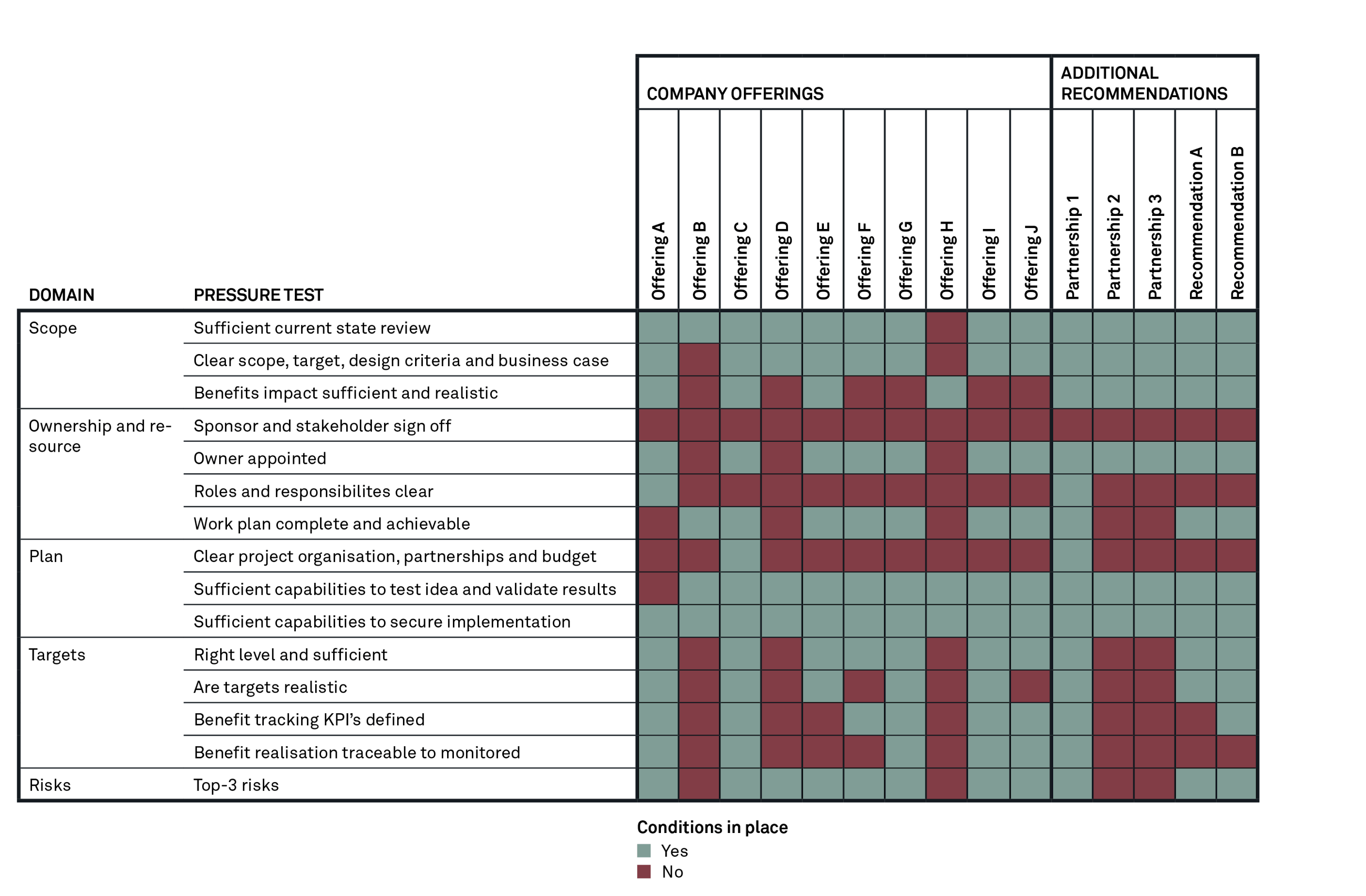Article
Are your strategic projects likely to be successful?
Published
20 January 2021
Increase the likelihood of successful project portfolio implementation by answering a few simple yet very fundamental set of questions.
Many growth initiatives do not realise the intended benefits ...
Most companies aspire to achieve long term profitable growth and have dedicated growth strategies to realise this. Yet several studies prove that CEOs are consistently overoptimistic, projecting double the growth and four times the long-term profitable growth compared to the actual impact their strategic initiatives achieve1.
A recent study by Implement Consulting Group2 confirms that profitable growth remains a key challenge: 41% of the respondents stated that they had not been growing profitably over the past three years.
... so why do project fail to deliver desired impact?
To implement the growth strategies, most companies have a collection of projects. As many as 98% of respondents in a recent study2 claimed to have a growth project portfolio in place. Yet, research shows that only 33%3 of all change initiatives manage to get the desired impact.
While most corporate change happens through projects and project execution, the failure rates make this a potentially very costly endeavour and even small increases in implementation success rates is worth a lot. However, this is easier said than done.
Change with impact requires an approach to both “solving the problem” and “making it happen”
The founding principle of Implement Consulting Groups approach to change is that securing desired change with impact involves both focusing on the right solution – “Solving the problem” as well as successful implementation – “Making it happen”.
Based on this basic yet powerful principle, increasing impact from projects requires development of winning strategies and solutions, as well as the testing and implementation of these. While many business trainings and business development approaches look at these as two fundamental requirements as separate steps, they are in fact difficult to separate, as illustrated very clearly by Roger Martin’s argument:
“If things don’t go well, what inevitably is the explanation?
Poor execution!
If things go awesomely, what is the reason?
Awesome strategy!
… the world is made a distinctly worse place by calling some stuff strategy and other stuff execution”.
Roger Martin
It is important to involve the key people who are going to execute the strategy deployment in the strategy development, as well as to blend deployment with continuous development through testing, piloting and prototyping of possible options, to constantly learn and refine the defined strategic approaches. This is explained very well in the Playing to Win strategy process approach; improving project success and impact is strongly intertwined with winning strategy and problem-solving approaches and choices.
Deploy a disciplined project process
Planned change is highly dependent on strong project execution. Deployment of a disciplined project process can help reduce project failure rates. Four key factors to focus on to improve success rates of projects are:
- Control initiation: The organisation must control the initiation of new projects, managers and executives can’t start a new project whenever they wish
- Prioritisation: The organisation must prioritise the major strategic initiatives to ensure they get the attention and resources they need
- Resources: The organisation must allocate resources to projects based on the priorities they have established. Without this, hundreds of “puppy projects” that produce very little benefit will use up to 40% of the organisation’s project resources
- Scalable methodology: The organisation has to use a consistent methodology for all projects that is scalable for the size and importance of the project. If not, small projects will be buried in too much paperwork.
Pressure test the project portfolio to ensure higher implementation impact
To increase the “stickiness” and likelihood of implementation of a plan, in addition to making sure to have a clear purpose, involving key stakeholders, setting reasonable targets and following up on plans, it is advised to “pressure test” the plans prior to approval to move forward – as part of an organised project planning process.
Why should we pressure test our strategic plans?
- To assess if the plans will generate desired impact;
- to identify the main execution risks;
- and to increase the likelihood of implementation success.
By asking and scoring answers to some very simple and yet very powerful questions and establishing an official approval process, robustness and implementation ability of the plans will increase. In fact, asking simple questions ahead of launch can dramatically increase likelihood of success since it front loads implementation issues that probably would have been discovered too late (e.g. “Do we have realistic targets?” or “Have we have clear sign-off from sponsor and stakeholders?”). The chosen readiness pressure tester questions should be customised to the overall company strategy and situation, and should include questions that ensure high likelihood of success.
Below is an example of a pressure test to be considered. When pressure testing plans – it is advisable to apply a binary approval approach, i.e. is the question fulfilled or not – no middle ground. Either the targets are realistic, or they are not, either the scope is clear or it is not, etc. In this way it becomes very clear how many/which of the plans that have the right prerequisites to succeed.
Plan for the future, but keep it simple and accept that it will change
All strategy initiatives should have a plan to get clarity and support communication (e.g. responsibilities, time plan and desired impact). However, the extent of detailing the plan will and should vary. Important in all situations is to keep it as simple as possible, and to realise that any plan is likely to change as circumstances change. If dealing with a small business with need for speed, it may be as simple as summarising the plans on one page.
If dealing with a bigger business, where there is more time to implement large improvements, a more detailed planning can be beneficial. To formalise the plan, a “one page case book” template can be used, (see example below), and can be complemented by further supporting back-up information as needed. A case book is simply a pre-defined planning summary template, containing most of the important information about what needs to be done, why, how, when and with what impact and implications.
Three stories of how pressure test can boost impact
To fully grasp the benefits of the pressure test and how it can help organisations ensure implementation success rate and boost impact, we have chosen three of our clients’ stories that we would like to share with you.
Readiness pressure tester
EXAMPLE 1
Fixed cost reduction effort as part of a turnaround effort
Below is a disguised fixed cost reduction plan example using the “case book and readiness pressure tester approach”, where the aim was to reduce costs dramatically and quickly. The company, a Private Equity owned industrial goods company, had been in a multi year turnaround following declining sales since the financial crisis. Most of the quick-fix cost reduction opportunities had already been taken advantage of, thus further required cost reductions were deemed difficult and painful. The approach was to target the largest cost categories. Over 20 cost reduction initiatives were defined and analysed, each initiative was then described in a standardised case book, pressure tested and prioritised, and consequently followed up on.
The project diagnostics and planning were carried out over six months. However, several simple initiatives were started right after the diagnostics phase due to their potential to deliver immediate impact with limited resources. Other more complex projects required more planning and preparation time. All in all, the fixed cost reduction initiatives implemented within the first six months enabled a realisation of 45% of the target for the entire cost reduction program. Within 18 months 100% of the targeted cost savings from the implemented initiatives was achieved.
EXAMPLE 2
Pressure testing a corporate strategy plan portfolio
A large international listed company had been very successful for many years in terms of delivering strong profitability. They developed a new five year strategic plan to boost growth with continued high profitability, which included a very clear winning ambition and distinct “where to play” choices, all well understood throughout the organisation. To support and implement this strategy they defined 25 corporate strategic initiatives.
One year into the new strategy, they decided to check the progress, health and direction of the strategic plans – and subsequently did a readiness pressure tester review of the corporate strategic initiatives in terms of both “strategic fit” of the initiatives as well as “capability to execute”. Interestingly, only 3 of the 25 initiatives were deemed high strategic fit and high capability to execute.
In summary, the overall “failure ratio” on what needed to be in place for the initiatives to success was 25%(!), and there where some distinct clusters around where the issues were in terms of Capability to Execute, here in particular three areas:
- Target image clear; scope, design criteria and business case – with a cross initiative portfolio “NO” ratio of 50%
- Sufficient capabilities to drive design, test and realise target image – with a cross initiative portfolio “NO” ratio of 54%
- Sufficient capabilities to secure implementation – with a cross initiative portfolio “NO” ratio of 50%
Obviously these areas represented significant stumbling blocks for the company capability to execute, and it was important to improve the foundation for a successful execution.
Therefore the company decided to do three actions:
- Invested to clarify the strategic objectives and choices, by better describing, communicating and visualising these
- Prioritized the initiatives – to make sure the most important were set-up and resources to deliver the desired impact
- Strengthened the PMO support set-up to coach, boost and monitor the progress of the key initiatives.
The strategy was formulated in 2015 and the readiness pressure tester was performed one year later in 2016. As depicted in the picture below, the company experienced an economic decline during the first year of the strategy, followed by an incline during the year after the readiness pressure tester. There can be many reasons for that, but surely executing on the recommendation presented earlier based on output from the pressure test was part of it.
EXAMPLE 3
Moving into the services business – pressure testing new offering plans
A leading engineering company had been challenged on sales due to increased low-cost competition, inability to scale and develop repeat business and low customer satisfaction rates. After auditing their business model, the management decided to capitalise on the know-how and experience of the engineering team and leverage its market-leading position to capture a share in the projected market growth.
Expanding the business model from engineering and design services to offering advisory services across the value chain was identified as a core growth initiative. The full organisation was involved in defining 11 potential industry service offerings, which were then pressure tested on scope, ownership, plan, targets and risks.
The Readiness pressure tester indicated a total readiness for launch to be 58% and highlighted core areas requiring further development, improvement or resources. Internal cross-functional new offering development teams were then formed to develop the offering plans to reach a pass rate of >90%, indicating readiness for launch.
Over the course of two months, the new offering development teams cooperated to develop Offering Casebooks – summaries of the core elements needed to successfully launch and commercialise a service offering. A Service Offering Casebook consists of the following elements:
- Brief description of the service offering – aimed at giving a brief, high level understanding of the core idea of the service offering
- Existing reference cases within the service area – to showcase credibility towards future prospective customers
- Current and future state review – to outline the status quo and the desired state of the offering in the future
- Internal and External enablers – to identify enablers necessary to successfully develop the offering
- Business impact estimate – high level business case of the new offering
- Top 3 risks, their severity and mitigation plan – to actively identify and manage risks
- Implementation plan – to develop and commit to a clear offering development timeline
- Pressure Test – to understand the current state regarding scope, ownership, plan, targets and risks related to the offering.
The Offering Casebooks served as a development progress tracker. After two months of iterative development, the New Service Offering were pressure-tested again, with a Pass Rate exceeding 90%. As a result, the company successfully launched the New Service Offerings – thus expanding their market footprint and switching the company’s business model from “competence owner” to “solution provider”.
On a final note
Knowing that only 1 out of 3 change projects manage to succeed to deliver the desired impact, it is well invested time to pressure test your strategic growth initiatives. Too often we fall for the habit of committing ourselves to deliver upon a detailed plan and deliverables, instead of being loyal to the impact. With the right approach to ensure readiness you can ensure not only solving the problem, but actually making it happen.
Do you want to know more?
We love to share insights with our community and you are more than welcome to contact us for a dialogue.

